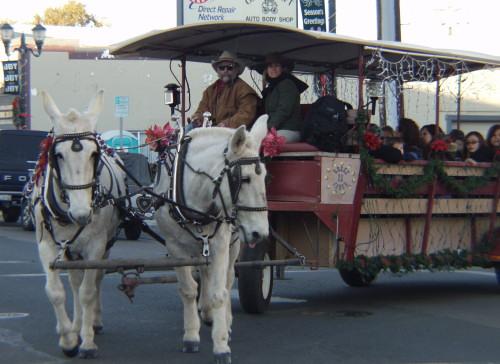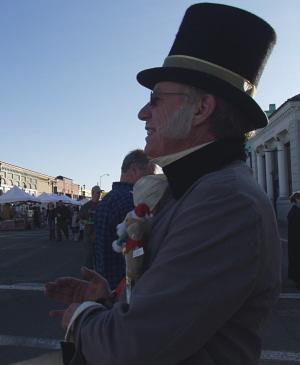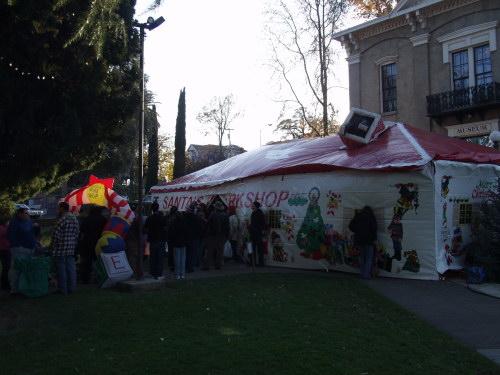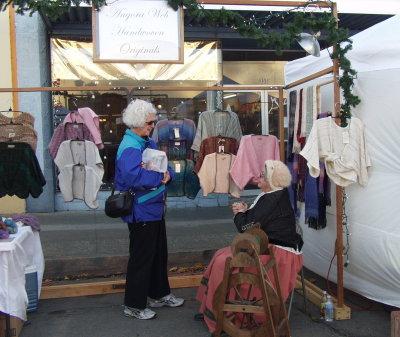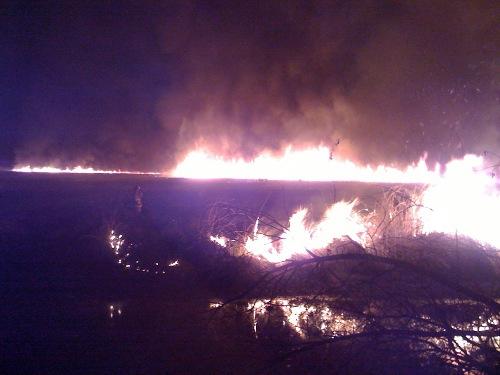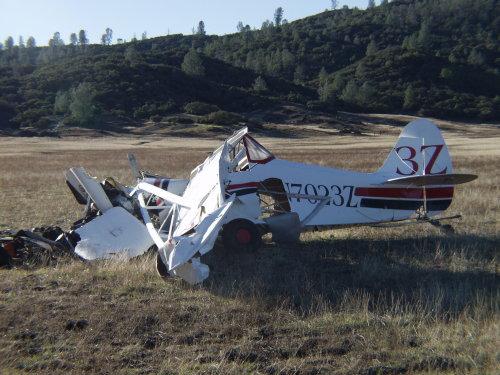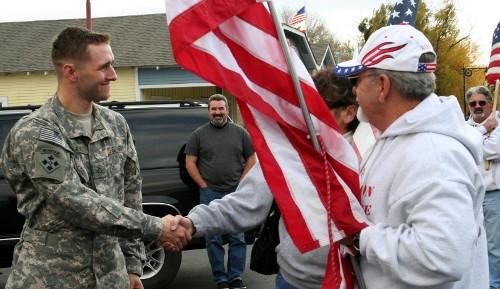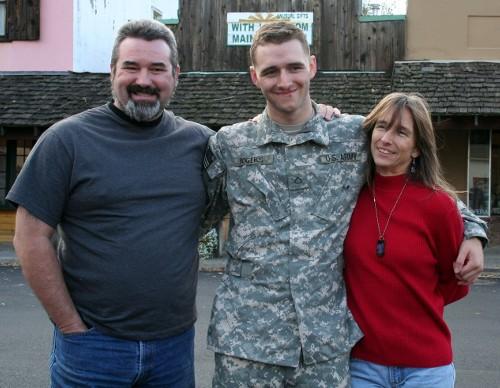In 1981 MTV debuted on the air with the prophetic song “Video Killed The Radio Star,” and we entered the era of pretty, perfect-bodied babes ruling the airwaves. Yeah, I’m talkin’ about you, Adam Lambert! But we have to face it, if a young Bob Dylan had auditioned for American Idol last season, it would most likely end with the following ...
Randy: “Dawg! It was pitchy, off key at points … nawh.”
Paula: “You’re unique. You are special and unique.”
Simon: “Absolutely horrendous! Do you realize that you’re singing out of your nose?”
Kara: “Can I please talk?”
What’s the point I’m trying to make? It’s this: Shallots are the Bob Dylan of onions. They are special and unique, but they have been replaced by the pretty, perfect-bodied babes. (Growling and shaking my fists: “Lambert!”)
I love shallots and have been growing them in my garden for years. It’s a shame that the food television shows don’t know more about them. I think the networks also put too much into the practice of having excessively pretty people hosting their shows than people who actually know a lot about food, but that’s what our society has become.
One of the biggest problems in food television is that much of it is written by people who don’t know the actual produce and products they use. They’re often written and produced by big city people who are getting their information from the Internet, and one of the things I teach in almost every class I do is that the Internet can be your worst enemy.
Take shallots for instance: I was watching a pretty girl’s cooking program and she said that she liked to use shallots in the recipe since they are milder flavored than onions. I start screaming at the TV, “That’s not a shallot, you dingbat, that’s a potato onion, a false shallot! They’re harsh tasting and taste nothing like a shallot, so you obviously have never tasted a real shallot in your life!”
I’m not embarrassed to admit this, I really do yell at my TV in times like this. I had to stop watching Emeril the day my daughter said, “Daddy why do you watch him, you just end up yelling at the TV?”
The pretty TV chef goes on to talk about shallots’ superior flavor, and I realize that she’s just spouting information that one of her little interns or flying monkeys picked up off the Internet and shoved into the teleprompter. The pretty TV chef was only there because she is a pretty face and interacts well with a camera, not because she’s someone who actually knows what she was cooking with.
It is very common to find imposters being used as shallots. False shallots, potato onions and even using young red onions as shallots is pretty usual. Even the “shallots” you find at the local grocery stores are actually potato onions. Imposters are almost always larger than true shallots since true shallots are typically only a tablespoon to a quarter cup in size. Traditional gardening habits use the largest bulbs in the kitchen and then replant the smallest for next year. I do the exact opposite, and due to this “selective breeding” my shallots are larger than most, some of my shallots being a half of a cup in volume. Imposters are also easier to work with, having thin, easy to remove skins, while the skin on true shallots is like armor plating.
While false shallots must be used within a couple of months, true shallots, if stored in a cool dry place, can be stored up to a year.
In my opinion shallot imposters have become popular because they grow faster and larger than true shallot varieties. False shallots can take as little as three months from planting to harvest.
I planted my shallots a month ago and they are just now starting to sprout. Green tops looking like chives will start to grow and can be used sparingly like chives. The bulbs will start to look like a head of garlic, but then each bulb will separate from the mother and grow green tops.
The bunch of bulbs will start to spread out and look like they are pushing themselves out of the ground. Each bulb will grow larger. Then up to eight months from now the tops will die off and turn brown and that will let me know they are ready for harvest.
This long growing time is one of the reasons that, while imposters sell for dollars per pound, true shallots sell for dollars per ounce. It is often said of true shallots that their flavor is milder than onions but that isn’t really true.
The true shallot's flavor is strong and complex but it dissipates faster than onions and you don’t have that lingering onion taste in your mouth for hours. Its aroma contains hints of garlic, lemon, chives and earth. The texture of cooked true shallots is much softer than that of cooked onions. It is also best to avoid browning shallots since this turns them bitter.
If I were the head of a cooking school of my own, or were Emperor of the planet, I would require all chefs to spend two weeks per year working on a farm. Most of the truly great chefs either own a farm or have a close relationship with a farmer.
When I worked on an oyster farm there was a program that had restaurant workers spend a week working on the farm. Later there were fewer complaints from those restaurants because they knew their product better and didn’t jump to conclusions. Cooks who really know and understand their ingredients are the best of the best.
The shallot’s history is muddled at best. Their first mention is around 300 BCE when Theophrastus, “the father of botany,” wrote of the “askolonion.” Where this word originates is unknown, but we know both the words shallot and scallion originate from it.
Centuries later, Pliny the Elder concluded that they were named after the city of Ashkelon in southern Israel. Although the city of Ashkelon did exist in Theophrastus’ time, no evidence supports this correlation.
Some sources say shallots originated in China 2,000 years ago and still others claim Southeast Asia. Whatever its origin, they became very popular in French, Flemish, Mediterranean and Thai cuisines. The Crusaders brought the shallot to Europe in the 12th century from the Middle East.
I think the problem is that I’m being pedantic (I usually am), while the rest of the world is falling into the marketing ploy to merge all multiplier onions under the heading of shallots. Even the Web site named after the shallot has only has one picture of a true (grey) shallot on it. They market a variety of shallot grown from seeds even though shallots don’t make seeds.
There is an unwitting movement to have the word shallot include Allium oschaninii and Allium cepa var. aggegatum, which are the most common imposter shallots. I say unwittingly because it’s not a vast right wing conspiracy as much as it’s just that people have read the information online and repeated it not knowing that the information is incorrect.
Just like the word “forte” is correctly pronounced “fort,” but through years of people mispronouncing it as “for-TAY” the dictionary itself has now changed to reflect the incorrect pronunciation. You can actually compare an older dictionary to a newer one and see the change. Shallots are going through the same process. The Bob Dylan shallots are being overshadowed by the Adam Lambert shallots.
Shallots are high in flavanoids, a type of antioxidant that protects the body against cancer, diabetes and heart disease. Shallots are low in carbohydrates, cholesterol, saturated fat, and sodium. They are also high in folate, manganese, potassium, and vitamins A, B6 and C.
True shallots are available to grow in your garden but using false shallots in your cooking is acceptable as long as you understand that the flavor and texture will be different. I use the shallots from the grocery store any time I’m out of my own shallots.
In an amusing twist the recipe I’ve included goes fantastic with steaks. It’s a Bercy style sauce but not a true Bercy sauce. So I do get a giggle while making a false Bercy sauce with my false shallots. I know, I’m being pedantic again.
Just for the record, I love Adam Lambert’s music and wanted him to win American Idol. It was just funnier using him in this context than someone more obvious. And you have to admit, he sure is pretty.
Bercy sauce for steaks
2 to 3 shallots, finely diced
3 tablespoons unsalted butter, divided
1 cup dry white wine
3 cups beef stock
2 tablespoons demi-glace (optional)
1 tablespoon lemon juice
3 tablespoons chopped parsley
Salt
Pepper
After cooking your steak, set it aside to let it rest. Add 1 tablespoon butter to the pan the steak was cooked in and add shallots. Sauté until tender, just a couple of minutes, then add white wine. Scrape the fond from the steak off the bottom of the pan and simmer over medium heat until mixture is reduced to just a couple of tablespoons. Add stock, demi-glace and lemon juice.
Bring back to a simmer over medium heat and reduce again to one cup. Remove from heat, and finish the sauce by whisking in the remaining butter and the parsley. Salt and pepper to taste, but be sure to taste first since reducing the stock may have increased the saltiness.
Ross A. Christensen is an award-winning gardener and gourmet cook. He is the author of "Sushi A to Z, The Ultimate Guide" and is currently working on a new book. He has been a public speaker for many years and enjoys being involved in the community. Follow him on Twitter, http://twitter.com/Foodiefreak .

 How to resolve AdBlock issue?
How to resolve AdBlock issue? 